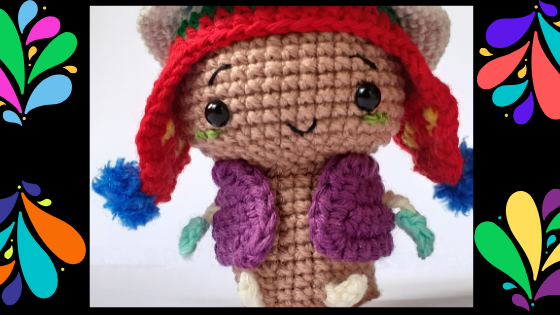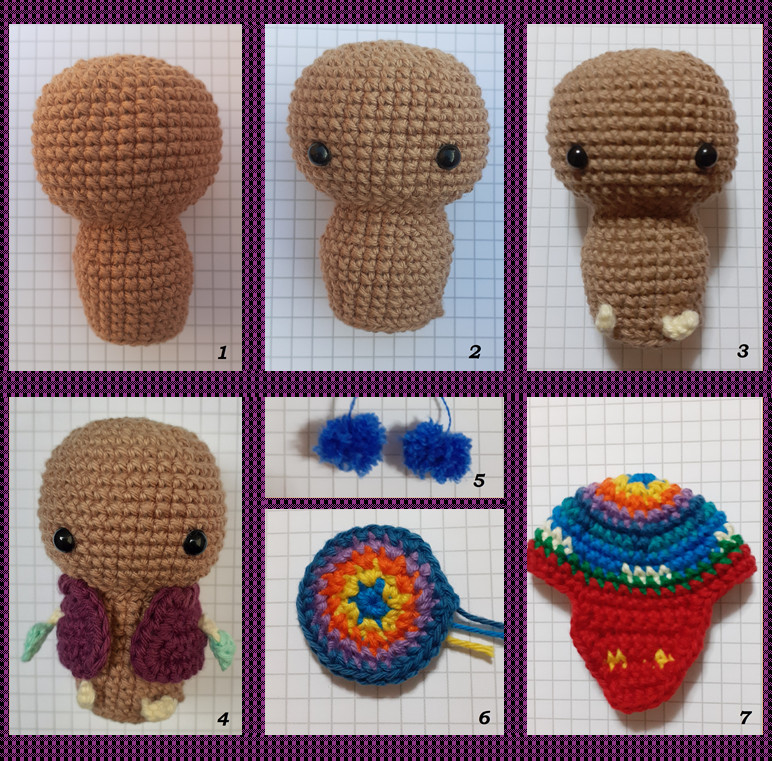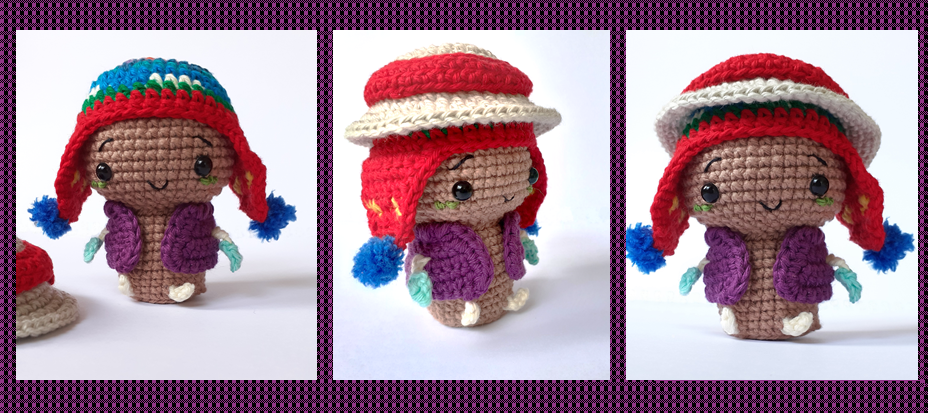Amigurumi - Personajes peruanos #7: Nativo
Vísperas: Día de la papa
Hola,
En la publicación anterior, hablamos sobre el chuño. Por si lo olvidaron, es una papa deshidratada y puede ser almacenada por mucho tiempo. También aprendimos que hay 2 tipos de papas: las nativas y modernas.
Esta vez tenemos como protagonista a Nativo, quien es una papa nativa. Si observamos al tubérculo (parte comestible), este es un tallo. Por ello, el personaje tiene brotes (tallos) con pequeñas hojas, en las extremidades y mejilla. Por otro lado, el chaleco hace referencia a la pigmentación de la piel característica de ciertas variedades de papas nativas.

In the previous publication, we talked about chuño. In case you forgot, it is a dried potato and can be stored for a long time. We also learned that there are two types of potatoes: native and modern.
This time we have Nativo, who is a native potato, as the main character. If we look at the tuber (edible part), this is a stem. Therefore, the character has sprouts (stalks) with small leaves, in the extremities and cheek. On the other hand, the vest refers to the characteristic skin pigmentation of certain varieties of native potatoes.
A tejer:

Nativo es primo de Tunta, por lo que se tomó el mismo patrón (figura 1). Se colocó los ojos y las patitas, al ser brotes no importa tanto la simetría (figura 2 y 3). Para el siguiente paso, se colocó un chaleco a manera de mancha morada junto con los brazos (figura 4). La elaboración del chullo fue inspirado en los habitantes de los andes (figuras 5, 6 y 7).
Nativo is Tunta's cousin, so the same pattern was taken (figure 1). The eyes and legs were placed, as they are sprouts it does not matter so much the symmetry (figure 2 and 3). For the next step, a vest was placed as a purple stain along with the arms (figure 4). The elaboration of the chullo was inspired by the inhabitants of the Andes (figures 5, 6 and 7).

En los andes hay alta radiación solar y frío a la vez, debido a ellos las personas optan por usar encima del chullo un gorro o sombrero. Además, en varias zonas del sur de los andes, se utiliza el color rojo. Cada pueblo de acuerdo a su cultura, le pone un significado a ese color.
In the Andes there is high solar radiation and cold at the same time, due to them people choose to wear a hat or cap over the chullo. In addition, in several areas of the southern Andes, the color red is used. Each town, according to its culture, puts a meaning to that color.
¡Y eso es todo!,
¡…Hasta la próxima!
See you next time!
Dato curioso: Nativo muestra una sonrisa y te invita a conocerlo/ Nativo shows a smile and invites you to meet him.
►Encuéntranos en:
- Facebook: https://www.facebook.com/iniciartecraft/
- Instagram: https://www.instagram.com/inici_arte_craft/
- Creary: https://creary.net/@diana.waranqa/
Many thanks to the team for their support.
Good vibes!
Bonito trabajo! Abrazos
Muchas gracias, que bueno que le agrade.
¡Ahhhhh, muy lindo! Me gusta especialmente la ropa!
Hola, la vestimenta está inspirada en los habitantes del sur del Perú, entre Puno y Cusco.
¡Buenas vibras!.
Thanks for sharing your creative and inspirational post on HIVE!
This post got curated by our fellow curator @tibfox and you received a 100% upvote from our non-profit curation service!
Join the official DIYHub community on HIVE and show us more of your amazing work!
Thank you very much to the healing team.
Good vibes!
beautiful work very creative and original.
Thank you very much, the potato motivates me.